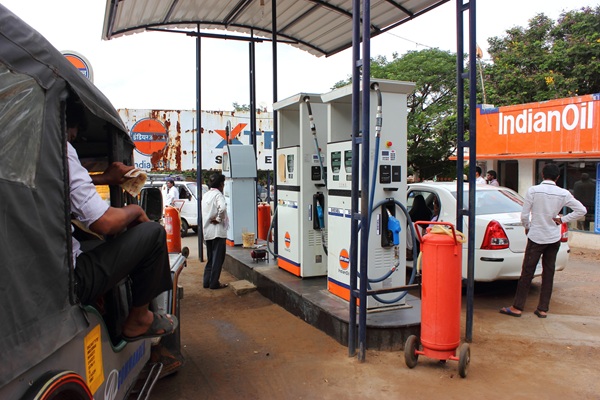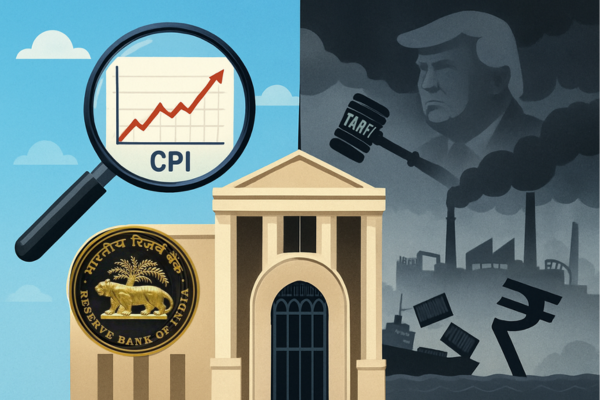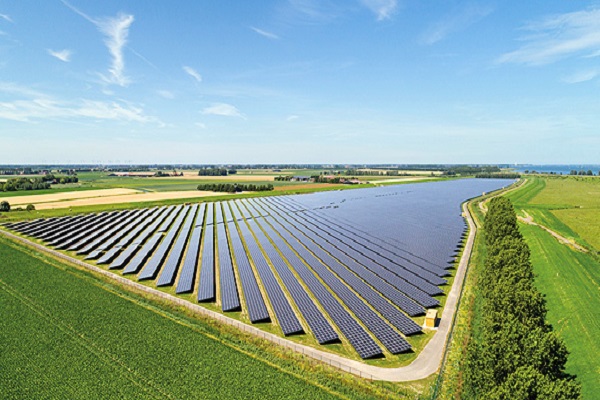.png)

Krishnadevan is Consulting Editor at BasisPoint Insight. He has worked in the equity markets, and been a journalist at ET, AFX News, Reuters TV and Cogencis.
September 28, 2025 at 5:17 PM IST
India's state-owned oil marketing companies staged an unprecedented roadshow this week, with Indian Oil Corporation management and the Ministry of Petroleum and Natural Gas conducting two separate investor meetings to hammer home a message the market has got spectacularly wrong. The dual-pronged pitch focussed on driving the message that India's public sector oil marketing companies are deeply undervalued despite robust earnings, strengthened governance, and structural demand visibility that extends decades into the future.
What makes this situation particularly striking is the ministry's acknowledgement of the valuation disconnect. These giants trade at just 4-6x EV/EBITDA despite strong earnings and 40% dividend payouts, while past concerns over governance and capital discipline are being systematically addressed.
To put this disconnect in perspective, the three major players—Indian Oil Corporation, Bharat Petroleum Corporation and Hindustan Petroleum Corporation—have together generated profits of ₹2.5 trillion over the past six years. Yet their market capitalisation remains remarkably low, comparable to companies such as Swiggy and Eternal, owner of Zomato, which together have posted losses of ₹24 billion.
The undervaluation becomes even more glaring when considering adjusted price-to-book ratios hover between 0.8x and 1.3x against returns on equity of 12-17%—these are value metrics typically reserved for distressed companies, not profitable energy giants.
Beyond the numbers, however, the roadshow delivered concrete policy assurances that have long eluded investors. The government's backing remains robust, with ₹520 billion already released since October 2022 for LPG under-recoveries, flowing into a dedicated buffer account with clear assurance that future losses will always be compensated.
What is significant is the ministry explicitly stated that current auto-fuel marketing margins have normalised after previous highs, effectively removing the risk of retail price cuts or fresh excise duty hikes in the near term. This policy clarity addresses longstanding investor concerns.
Helming the roadshow, energy minister Hardeep Singh Puri openly expressed disappointment, remarking that almost all state-owned enterprises pay dividends consistently, while the biggest private groups do not match that record.
The government conveyed that full privatisation was not on the agenda; and Bharat Petroleum is not for sale. There might be partial stake sales to attract strategic partners and efficiency, but the government insists these enterprises are not personal fiefdoms. Decisions are board-driven, dividends are regular, and autonomy is assured.
Yet investor bias persists. There remains a presumption that state involvement means undermined returns, with fears of government sacrificing profit for price control. Recognising this perception problem, the roadshow directly countered this narrative, highlighting recent governance reforms, including longer tenures for chairmen and directors, plus performance-linked pay tied to independent scorecards with 58% weightage to revenue and production, 20% to profitability, and 15% to shareholder value creation.
Officials also pointed to the move to harmonise gross refining margin calculations with those of private sector refiners, for greater transparency.
Operationally, the sector fundamentals are equally compelling. The ministry's capex outlook was particularly encouraging, noting that the PSU capex cycle is peaking, with IOC and HPCL's major projects nearing completion, which will sharply reduce capital work-in-progress, while BPCL begins its next cycle with very limited leverage on books currently. This positions the sector for improved cash generation and operational leverage as brownfield expansions deliver faster returns than greenfield alternatives.
Leading this transformation, IOC is scaling up refining capacity from 80 million to 98 million tonnes per annum over the next two years, moving rapidly via brownfield expansion. Petrochem capacity will triple, with the Paradip project switching to cheaper feedstock, reducing costs and strengthening margins.
IOC aims to raise its share of India's total energy supply to 12% from 9% over 5 years, with a significant transition towards gas and clean energy. The Sprint efficiency programme launched in April 2025 targets 20% operating expense savings in 2025-26, already exceeding April-June targets, while polymer margins have recovered to $432 per tonne in July-September.
Meanwhile, the group's clean energy projects are ambitious. IOC holds 80% of the domestic LNG market, and expects to commission the country's largest green hydrogen plant at Panipat by December 2027. Renewable assets will be unified under the Terraclean platform, targeting capacity of 18 GW by 2030 and a public listing within three years. Sustainable aviation fuel production is scaling up, with a 5% blend targeted by 2030; IOC is currently the only certified producer in the country.
From a valuation standpoint, the financial ratios of these companies highlight persistent undervaluation. Dividend yields stand above 4%, while price-to-earnings ratios are below 10x, at a time when the companies' return on equity hovers between 12% and 17%. Regular payouts make these stocks stand out in a field crowded with sporadic private sector dividends.
Perhaps most convincingly, the roadshow's most compelling long-term thesis centred on demand resilience. The ministry maintains that India will be the “last man standing” on oil and gas demand, with consumption plateauing only beyond 2040-45, while management expects domestic petrochemical demand to triple to 90 million tonnes per annum by 2040.
This positioning effectively gives these companies a 20-year runway of sustained demand growth, a luxury few sectors can claim. With crude oil expected to settle close to $60 per barrel, fundamentals support both gross refining margins and marketing margins.
It appears the government seems resolved to support its core assets not just by investment and reform, but by tackling tired narratives head-on through systematic investor engagement. Investors ignoring the roadshow's evidence could be missing the clearest long-term value in the markets is what the Indian government is pointing out.




